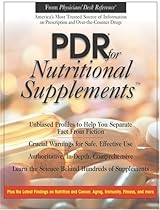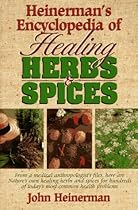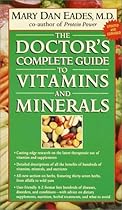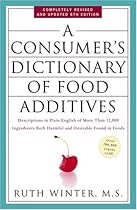Mark Stengler, N.D.
See book keywords and concepts |
 Juicing
It doesn't take a rocket scientist, as they say, to figure out that anyone can make delicious, refreshing, and nutritious drinks by squeezing fresh fruit and vegetables until their juice pours out. But beyond the good taste, there are proven rewards for health and vitality.
Today, more people than ever are benefiting from the healing power of juices. Even I got pumped up after seeing the "juice man" himself, Jay Kordich, on late-night infomercials praising the miracles of juicing. He looks like he has more energy and enthusiasm than my three-year-old son! Juicing
It doesn't take a rocket scientist, as they say, to figure out that anyone can make delicious, refreshing, and nutritious drinks by squeezing fresh fruit and vegetables until their juice pours out. But beyond the good taste, there are proven rewards for health and vitality.
Today, more people than ever are benefiting from the healing power of juices. Even I got pumped up after seeing the "juice man" himself, Jay Kordich, on late-night infomercials praising the miracles of juicing. He looks like he has more energy and enthusiasm than my three-year-old son! |
| They include a blend of vegetables, fruits, and herbs that would be hard to cram into a single fresh drink—so you get the benefit of a wide variety of food extracts. The drawback, of course, is that the green drinks aren't made up of fresh foods, so you do lose some of the nutritive value of fresh juices. But they are helpful, easy, and convenient—and you can get green drinks in powder or capsule form.
One of the major reasons I recommend juicing for patients is that it helps them to detoxify. |
| If you're eating a lot of vegetables, fruits, legumes, nuts, seeds, and whole grains, you'll be getting a full spectrum of various types of fiber. Studies have shown that many vegetarians have a lower risk of many chronic conditions such as heart disease and many types of cancers, compared with the general population.
For the average American who is not a vegetarian, fiber intake is usually far below what it should be. |
Sheldon Saul Hendler and David Rorvik
See book keywords and concepts |
 Fruits and vegetables are the most important dietary sources of boron. A vegetarian diet is higher in boron than the typical American diet. The range of intake in the American diet is 0.5 to 3 mg daily. The average intake is about 1 mg daily. It is lower in the elderly. There is some evidence that this average intake may be too low; a more optimal intake of boron may be 2 to 3 mg daily.
Dietary supplements of boron now available include the following forms: sodium borate, boron citrate, boron aspartate, boron glycinate. Fruits and vegetables are the most important dietary sources of boron. A vegetarian diet is higher in boron than the typical American diet. The range of intake in the American diet is 0.5 to 3 mg daily. The average intake is about 1 mg daily. It is lower in the elderly. There is some evidence that this average intake may be too low; a more optimal intake of boron may be 2 to 3 mg daily.
Dietary supplements of boron now available include the following forms: sodium borate, boron citrate, boron aspartate, boron glycinate. |
Mark Stengler, N.D.
See book keywords and concepts |
 Nuts are also a source as are some vegetables like broccoli and spinach. The body manufactures CoQIO from the amino acid tyrosine. This synthesis requires the action of vitamins C, B2, B6, B12, folic acid, niacin, and pantothenic acid. Another important function of CoQIO is that it works to recycle vitamin E.
DOSAGE
If your health is good but you just want to take coenzyme Q10 for prevention, I'd recommend 25 to 100 milligrams daily. Nuts are also a source as are some vegetables like broccoli and spinach. The body manufactures CoQIO from the amino acid tyrosine. This synthesis requires the action of vitamins C, B2, B6, B12, folic acid, niacin, and pantothenic acid. Another important function of CoQIO is that it works to recycle vitamin E.
DOSAGE
If your health is good but you just want to take coenzyme Q10 for prevention, I'd recommend 25 to 100 milligrams daily. |
| Harness the Power of Plant Foods
Don't forget the power of plant foods when you're on a fat-reduction diet. vegetables and some fruits are excellent sources of fiber, which helps to bind fat from foods and expel it in the stool.
Fiber also helps to slow the release of sugar from foods into the bloodstream. This is especially true of soluble fiber—found in oat bran, dried beans, peas, rice bran, barley, and apple skin.
Plant foods are also excellent sources of phytonutrients that aid the body in many ways, including the process of "burning fat"—that is, fat metabolism. |
John Heinerman
See book keywords and concepts |
 Two vegetables are called artichokes, but have absolutely no relation to each other. We distinguish them as the globe artichoke and the Jerusalem artichoke. The former is a green vegetable somewhat like a tiny cabbage, except that its leaves are smaller and thicker. The latter isn't even an artichoke, nor has it anything to do with Jerusalem. It came here from South America and first was called "girasole" from its likeness to the sunflower. Later this was corrupted into "Jerusalem." The tubers are pleasant enough to consume, but have no medicinal value. Two vegetables are called artichokes, but have absolutely no relation to each other. We distinguish them as the globe artichoke and the Jerusalem artichoke. The former is a green vegetable somewhat like a tiny cabbage, except that its leaves are smaller and thicker. The latter isn't even an artichoke, nor has it anything to do with Jerusalem. It came here from South America and first was called "girasole" from its likeness to the sunflower. Later this was corrupted into "Jerusalem." The tubers are pleasant enough to consume, but have no medicinal value. |
Michael Castleman
See book keywords and concepts |
 Carrots are one of the few vegetables that travel well raw for kids' (and grown-ups') lunches and snacks.
Ever wonder why Bugs Bunny has lived so long? It just might be the carrots.
Cancer. Beta-carotene consumption has been linked to reduced risk of several cancers, notably lung cancer. Researchers at Johns Hopkins University in Baltimore analyzed beta-carotene levels in a large group of volunteers who donated blood in 1974. By 1983, 99 had developed lung cancer. Who were they? The ones with the lowest levels of beta-carotene.
British researchers have corroborated these findings. Carrots are one of the few vegetables that travel well raw for kids' (and grown-ups') lunches and snacks.
Ever wonder why Bugs Bunny has lived so long? It just might be the carrots.
Cancer. Beta-carotene consumption has been linked to reduced risk of several cancers, notably lung cancer. Researchers at Johns Hopkins University in Baltimore analyzed beta-carotene levels in a large group of volunteers who donated blood in 1974. By 1983, 99 had developed lung cancer. Who were they? The ones with the lowest levels of beta-carotene.
British researchers have corroborated these findings. |
John Heinerman
See book keywords and concepts |
 Stir-fry for 2 1/4 minutes or until the vegetables become tender. Recombine the cornstarch mixture and add. Stir until thick and transfer to serving platter.
Medicinal Edibles
The following recipe is a reverse of that old adage about "food also being our best medicine." In this instance, a reliable medicinal really enlivens veal cutlets. My gratitude goes to Kathryn G. and Andrew L. March for letting me borrow this from their wonderful book, The Wild Plant Companion. Stir-fry for 2 1/4 minutes or until the vegetables become tender. Recombine the cornstarch mixture and add. Stir until thick and transfer to serving platter.
Medicinal Edibles
The following recipe is a reverse of that old adage about "food also being our best medicine." In this instance, a reliable medicinal really enlivens veal cutlets. My gratitude goes to Kathryn G. and Andrew L. March for letting me borrow this from their wonderful book, The Wild Plant Companion. |
Mark Stengler, N.D.
See book keywords and concepts |
 They can actually be consumed in moderation if you also eat high-fiber foods like vegetables, whole grains, and legumes. The reason for this is that each food has what is called a glycemic index. The glycemic index is a rating of how high glucose levels rise after a food is consumed. The higher the glycemic rating, the faster the glucose enters the bloodstream, and the greater the insulin response.
Glucose has a rating of 100. Lentils have a rating of 30, while a bagel has a rating of 72. So if you were to have a bagel along with a salad, your blood-sugar elevation would not be nearly so high. They can actually be consumed in moderation if you also eat high-fiber foods like vegetables, whole grains, and legumes. The reason for this is that each food has what is called a glycemic index. The glycemic index is a rating of how high glucose levels rise after a food is consumed. The higher the glycemic rating, the faster the glucose enters the bloodstream, and the greater the insulin response.
Glucose has a rating of 100. Lentils have a rating of 30, while a bagel has a rating of 72. So if you were to have a bagel along with a salad, your blood-sugar elevation would not be nearly so high. |
Earl Mindell
See book keywords and concepts |
 Best Natural Sources:
Kelp, vegetables grown in iodine-rich soil, onions, and all seafood.
Supplements:
Available in multimineral and high-potency vitamin supplements in doses of 0.15 mg. Natural kelp is a good source of supplemental iodine.
Toxicity and Warning Signs of Excess:
No known toxicity from natural iodine, though intakes above 2 mg. are not recommended and iodine as a drug can be harmful if prescribed incorrectly. (See section 334, "Cautions.")
Enemies: Food processing, nutrient-poor soil. Best Natural Sources:
Kelp, vegetables grown in iodine-rich soil, onions, and all seafood.
Supplements:
Available in multimineral and high-potency vitamin supplements in doses of 0.15 mg. Natural kelp is a good source of supplemental iodine.
Toxicity and Warning Signs of Excess:
No known toxicity from natural iodine, though intakes above 2 mg. are not recommended and iodine as a drug can be harmful if prescribed incorrectly. (See section 334, "Cautions.")
Enemies: Food processing, nutrient-poor soil. |
| Phytochemicals are chemicals found in plants; health-promoting nutrients that give fruits, vegetables, grains, and legumes their color, flavor, and natural protection against disease. They are, essentially, the plants' immune system. They are potent antioxidants and can provide protection against free radical damage, helping the body ward off a variety of ailments, including heart disease and cancer.
I've been hearing a lot about nutraceuticals. Are they supplements?
They certainly are—and probably the most exciting breakthrough in preventive medicine! |
| Cancer researchers have found that vitamins C and E and certain chemicals called indoles, found in cabbage, brussels sprouts, and related vegetables in the crucifer family, are potent and safe inhibitors of certain carcinogens!
• Vitamin Bl can help fight air- and seasickness.
• If you're on a high-protein diet your need for B6 increases!
• Onions, garlic, radishes, and leeks all contain a natural antibiotic called allicin, which can destroy disease germs without sweeping away the friendly bacteria in the process!
• Aspirin can triple the rate of excretion of your vitamin C! |
| Best Natural Sources:
Root vegetables, whey, the liquid portion of soured or curdled milk.
Supplements:
Available as calcium orotate in supplemental form outside of the United States.
Toxicity and Warning Signs of Excess:
Too little is known about the vitamin at this time to establish guidelines. (See section 334, "Cautions.")
Enemies: Water and sunlight.
Personal Advice:
Not enough research has been done on this vitamin for recommendations to be made.
35. B15 (Pangamic Acid, DMG, Dimethylglycine)
Facts: Water soluble. |
| Among them are garlic, broccoli, cabbage, onions, plain yogurt, turnips and other vegetables.
And an effective supplement regimen would be:
MVP (see section 172) MSM, 1,000 mg. 3 times daily Vitamin E (dry form) 200-400 IU daily Caprylic acid supplement, 1-3 times daily Acidophilus (yeast free) 1 capsule 3 times daily
260. Chicken Pox
This childhood staple is caused by a virus closely related to that of shingles. The fever and itching deplete a good amount of nutrients. Many mothers have found their children up and about faster by adding the following supplements to their diets. |
Dr. Mary Dan Eades
See book keywords and concepts |
 Recommendation: Center your diet around vegetables and fruits, which are cholesterol-free.
• Coffee can elevate cholesterol levels when consumed in large amounts. Recommendation: If you can't eliminate coffee, keep your daily intake to a maximum of 2 cups.
-Chronic Ear Infection -
What is it?
Ear infections come in two varieties: infection of the middle ear and infection of the outer ear or ear canal, often called swimmer's ear. I will address middle ear infections here and discuss ear canal infections under Swimmer's Ear. Recommendation: Center your diet around vegetables and fruits, which are cholesterol-free.
• Coffee can elevate cholesterol levels when consumed in large amounts. Recommendation: If you can't eliminate coffee, keep your daily intake to a maximum of 2 cups.
-Chronic Ear Infection -
What is it?
Ear infections come in two varieties: infection of the middle ear and infection of the outer ear or ear canal, often called swimmer's ear. I will address middle ear infections here and discuss ear canal infections under Swimmer's Ear. |
| Lean meat, fish, joultry, and egg white should constitute 35% of your day's caloric ntake; another 35% should come from high-fiber vegetables (greens, quashes, broccoli, cauliflower, asparagus), whole brown rice, and lairy products. The final 30% should come from essential fats, nostly the polyunsaturated and monounsaturated oils, such as olive, unflower, and canola.
• Folic acid deficiency occurs commonly in these bowel disor-ers, both from low intake and from poor absorption by the in-amed intestinal tissues. |
| In fruit, the soluble fiber is called pectin; in grains, it is called bran; and in vegetables, it is psyllium. Whatever the name, the function is the same.
As a diabetic, you should ultimately take in at least 50 grams of soluble fiber each day from the foods you eat and from vegetable fiber supplements, but don't go from little fiber to that amount overnight or you will suffer mightily with bloating, gas, and abdominal cramping. Recommendation: Aim for a steady daily total of at least 50 grams of soluble fiber per day. But do it slowly! |
| Recommendation: Eat foods high in fiber: whole grain cereals, brown rice, bran, most fresh fruit, nuts, seeds, beans, lentils, peas, and fresh raw vegetables. Unsalted, unbuttered popcorn is another excellent source of fiber. If you choose to use a supplement, try psyllium seeds, which can be mixed with liquid and consumed quickly. Metamucil contains psyllium hydrophilic muciloid and is often recommended by physicians. There are other supplements that are more natural, however, available at health food stores. |
| Fat solubility also means that vitamin A does not dissolve in water; however, a little of the vitamin (about 15% to 35%) is still lost during the boiling, steaming, and canning of vegetables. The vitamin also withstands the heat of cooking, but can be destroyed by air through the process of oxidation.
Food Sources—Liver, sweet potatoes, asparagus, cantaloupe, carrots, spinach, broccoli, winter squash, raw apricots, fortified fluid milk.
Functions in the Body—The most widely known function of vitamin A must surely be prevention of night blindness. |
| You should aim for the dietary percentages given there: 30% of your day's total number of calories from protein; 40% from low-starch vegetables, whole fresh fruits, rice and oats; and 30% from fats and oils. Avoid or sharply reduce your intake of nutritionally blank foods, such as refined sugars: table sugar, com syrup, high-fructose corn syrup, molasses, and products made with these substances. Make your nutrition count. |
Gary Null
See book keywords and concepts |
 And they also supply other nutrients, such as iron and B vitamins, in which many vegetables are deficient. They contain fats we can use for energy, heat insulation, and a variety of metabolic functions. Many of our organs, including our nerves, can make good use of this fat (although unsaturated fats from vegetable or fish sources would be preferable).
However, father is probably not aware that, along with those amino acids, B vitamins, and saturated fats, his family is also taking into the body some unwanted visitors. And they also supply other nutrients, such as iron and B vitamins, in which many vegetables are deficient. They contain fats we can use for energy, heat insulation, and a variety of metabolic functions. Many of our organs, including our nerves, can make good use of this fat (although unsaturated fats from vegetable or fish sources would be preferable).
However, father is probably not aware that, along with those amino acids, B vitamins, and saturated fats, his family is also taking into the body some unwanted visitors. |
| And by the time he finishes a pound or so of roast beef, he's really not very interested in eating his vegetables, such as they are. He throws a few pats of butter onto his potato—still more saturated fat —eats the inside and discards the skin as waste. He doesn't realize he's throwing out a fine source of fiber and vitamin C—neither of which is to be found in his roast beef. And by eating so little salad, he's shortchanging himself of magnesium—a mineral found in leafy greens and needed for the proper functioning of nerve tissue and of the muscles he thinks his meat is taking care of. |
John Heinerman
See book keywords and concepts |
 Alexander Fischbein, a recently retired urologist in Texas, got in touch with me after receiving one of my other national health best sellers, Heinerman's Encyclopedia of Fruits, vegetables and Herbs (Englewood Cliffs, NJ: Prentice Hall, 1988). He was intrigued with the many diverse applications for a large number of foods and herbs cited in the text, particularly for cornsilk. He gently chided me for being so skimpy with the information on cornsilk. Alexander Fischbein, a recently retired urologist in Texas, got in touch with me after receiving one of my other national health best sellers, Heinerman's Encyclopedia of Fruits, vegetables and Herbs (Englewood Cliffs, NJ: Prentice Hall, 1988). He was intrigued with the many diverse applications for a large number of foods and herbs cited in the text, particularly for cornsilk. He gently chided me for being so skimpy with the information on cornsilk. |
Rebecca Wood
See book keywords and concepts |
 The diet included potatoes but no other vegetables or fruits except when holiday foods were carried up from the lowlands. There was seldom meat." tive enzymes, can resolve toxic substances, and contains nutrients that slow deterioration and mutation.
Barley grass juice is available at most natural food stores and juice bars, freshly juiced in one-ounce servings—a little is all it takes. It is also sold in tablet or powder form.
See Wheat Grass Juice.
BARLEY MALT SUGAR
Barley malt sugar is a buff-colored, crystalline powder made by evaporating the water out of barley malt syrup. The diet included potatoes but no other vegetables or fruits except when holiday foods were carried up from the lowlands. There was seldom meat." tive enzymes, can resolve toxic substances, and contains nutrients that slow deterioration and mutation.
Barley grass juice is available at most natural food stores and juice bars, freshly juiced in one-ounce servings—a little is all it takes. It is also sold in tablet or powder form.
See Wheat Grass Juice.
BARLEY MALT SUGAR
Barley malt sugar is a buff-colored, crystalline powder made by evaporating the water out of barley malt syrup. |
Sheldon Saul Hendler and David Rorvik
See book keywords and concepts |
 DESCRIPTION
Activated charcoal is a type of amorphous carbon prepared by destructive distillation of such materials as wood, vegetables and coconut shells, materials that have much higher surface areas than charcoal itself. It is a fine, black powder of largely pure carbon. The large surface area of activated charcoal confers a great adsorptive capacity to this material. It is this great adsorptive capacity that is the basis for its many industrial as well as medical uses. There are different types of activated charcoal with different adsorption characteristics. DESCRIPTION
Activated charcoal is a type of amorphous carbon prepared by destructive distillation of such materials as wood, vegetables and coconut shells, materials that have much higher surface areas than charcoal itself. It is a fine, black powder of largely pure carbon. The large surface area of activated charcoal confers a great adsorptive capacity to this material. It is this great adsorptive capacity that is the basis for its many industrial as well as medical uses. There are different types of activated charcoal with different adsorption characteristics. |
Rebecca Wood
See book keywords and concepts |
 BRUSSELS SPROUT
(Brassica oleracea gemmifera)
Of all vegetables in the garden, Brussels sprouts look the strangest. From 20 to 40 auxiliary buds (or baby cabbages) grow close together along a tall, single stalk that's topped with small cabbagelike leaves. Brussels sprouts originated in Brussels, Belgium— ergo its name. The Germans more aptly called it Rosenkohl, or "rose cabbage."
Use In a traditional British Christmas dinner, Brussels sprouts are a given. BRUSSELS SPROUT
(Brassica oleracea gemmifera)
Of all vegetables in the garden, Brussels sprouts look the strangest. From 20 to 40 auxiliary buds (or baby cabbages) grow close together along a tall, single stalk that's topped with small cabbagelike leaves. Brussels sprouts originated in Brussels, Belgium— ergo its name. The Germans more aptly called it Rosenkohl, or "rose cabbage."
Use In a traditional British Christmas dinner, Brussels sprouts are a given. |
| BEET
(Beta vulgaris)
The beet is the most intense of vegetables. The radish, admittedly, is more feverish, but the fire of the radish is a cold fire, the fire of discontent, not of passion. Tomatoes are lusty enough, yet there runs through tomatoes an undercurrent of frivolity. Beets are deadly serious.
—Tom Robbins, Jitterbug Perfume
Why is it that one day eating a beet turns your urine pink, whereas another day and another beet produce magenta stool? According to nutritionist Jeffrey Bland, Ph.D., pink urine may indicate an iron deficiency while magenta stool indicates adequate iron. |
| Use the leaves in salads, pasta sauces, beans with cooked vegetables, and as a garnish. When adding the blossoms to a salad, add as a garnish at the last moment to prevent the dressing from discoloring them. In Sicily and Italy, borage, hops, and endive are cooked and eaten as a spring tonic.
Buying Borage wilts so rapidly that unless it's plucked fresh from the garden, substitute dried borage.
See Gamma-Linoleic Acid; Herbs and Spices.
Bosc Pear See Pear.
Boston Lettuce See Butterhead Lettuce. |
Ruth Winter
See book keywords and concepts |
 GRAS. See Calcium Phosphate. MONOCHLORACETIC ACID • A banned preservative. Any amount in beverages and other food will be considered adulterated by the FDA. MONO- and DI-GLYCERIDES of FATS or OILS • Mono- and di-glycerides of edible fat-forming acids used as emulsifiers in oleomargarine. GRAS. See Glycerides.
MONOETHANOLAMINE • Used in flume water for washing sugar beets prior to slicing. See ethanolamine.
MONOGLYCERIDE CITRATE • Aids the action of and helps dissolve antioxidant formulations that retard rancidity in oils and fats. See Citrate Salts for toxicity. GRAS. See Calcium Phosphate. MONOCHLORACETIC ACID • A banned preservative. Any amount in beverages and other food will be considered adulterated by the FDA. MONO- and DI-GLYCERIDES of FATS or OILS • Mono- and di-glycerides of edible fat-forming acids used as emulsifiers in oleomargarine. GRAS. See Glycerides.
MONOETHANOLAMINE • Used in flume water for washing sugar beets prior to slicing. See ethanolamine.
MONOGLYCERIDE CITRATE • Aids the action of and helps dissolve antioxidant formulations that retard rancidity in oils and fats. See Citrate Salts for toxicity. |












